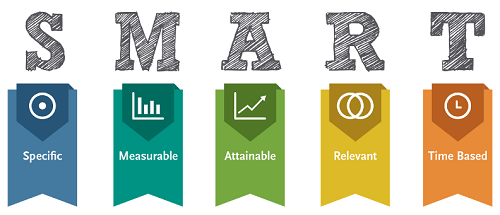Tips for setting expectations
What should determine the expectations we set?
Expectations should come from the following 5 areas:- What are the key responsibilities of the job description and what specific outcomes are you looking for?
- What’s the best contribution the employee can make to the objectives of their team or work group?
- What standards of quality or productivity would you expect from a fully effective employee in this role?
- What behaviors do we expect from employees to reflect our values?
- In what areas do you expect to see growth and performance development?
How to set expectations
Step 1: Open the conversation and describe its purposeIt’s important that employees understand the background to the expectations you are setting. How does the performance of their job contribute to the wider purpose and objectives of the team and business? Why is what they do, and how they do it, important? Having a wider sense of the value of what we do and how it connects to the bigger picture usually increases motivation and helps employees (and their team) operate co-operatively.
Step 2: Describe the expected results
The expectations you set should be in the form of written objectives, goals or targets, or similar descriptions of the results you expect. You should prepare and use S.M.A.R.T descriptions for your expectations as follows:

Simply stating what you expect is not enough. Often people misunderstand what we say we expect, or become confused over priorities and measures. Give the employee time to reflect on what you’ve said (or provided) and then ask whether they are clear about your expectations. To avoid confusion, ask the employee to repeat back the expectations and standards you have communicated.
Committing in principle to expectations is important, but practical issues often get in the way of delivery. Check with the employee that they have the tools, time, knowledge, training, materials etc. to deliver what is required; and that they understand how priorities should be handled. It’s often a good idea to give the employee a short period of time to reflect on the expectations you’ve set and come back with any practical issues that need to be resolved to ensure success.
People do what we ‘inspect’ not what we ‘expect’ and so regular ‘on track’ reviews are essential to make sure expectations are being met. As part of the setting expectations conversation you should agree how, and when, progress will be measured. Consider brief monthly ‘on track’ reviews or schedule brief verbal or email reports. Make sure though, that the employee fully understands your ‘no surprises’ policy, meaning they should talk to you as soon as it becomes apparent they may not be able to deliver the agreed expectations.
With the expectations clear, issues around resourcing resolved, and agreement in place on how progress will be measured, you should ask the employee for their commitment to delivering on those expectations. Ask specifically for this ‘verbal handshake’ as you close out the conversation. It’s a good idea to express your confidence in the employee’s ability to deliver and perhaps reiterate your ‘no surprises’ policy. Let them know you are available to help and support, if required.
Continue to prepare a conversation plan using the template provided.
Tips for Setting Expectations
Remember- Make it a priority. It should be an extremely high value activity for us, if we expect people to succeed.
- Hearing your expectations and delivering the results are two completely different things. You need both!
- You must link expectations to job descriptions.
- We’re trying to awaken motivation and enthusiasm for these expectations.
- It’s about getting the employee focused on what really matters – not a laundry list of everything we might ask of them.
- We need to talk about excellence if we want the employee to achieve excellence. Don’t aim people at the garden fence if you expect them to reach the moon.
- Put in place a ‘no surprises’ policy. If something arises that means the employee may not deliver on an expectation, you need to know so you can work out together, how to get back on track or otherwise amend the plan.